Divine Comedy + Decameron discussion

This topic is about
The Divine Comedy
Dante's Commedia
>
21-27 April: Paradiso VIII-XIV
date newest »
newest »
 newest »
newest »
Freccero, John. "Paradiso X: The Dance of the Stars." In Dante Studies, LXXXVI, 85-111. [1968]
Drawing upon recent work of Jourdain, Rahner, Daniélou, and Bousset, as well as his own, Professor Freccero focuses upon Par. X to explore Dante's translation of beatitude into astronomical terms.
Pointing out that the Paradiso is an ad hoc reality which depends, not on a principle of mimesis, but on a metaphorical tour de force, he examines certain components (especially the Heaven of the Sun) of the canto that constitute in turn the metaphoric structure of the cantica and relates them to the spiritual reality they are made to represent.
In the accommodation of Heaven to the senses of the pilgrim, which stands also for the accommodation of the poet's experience per verba to us, Dante was following the pattern of the Bible, the eternal witness of God's accommodation--his Word--to man. "The extended metaphor of the Paradiso, established by the command performance of the elect for the benefit of the pilgrim, is in fact a poetic reconciliation of the Platonic myth of the stellar souls with the Christian conception of Heaven." The stellar dance of the "spiriti sapienti who have descended to the Heaven of the Sun for the pilgrim's edification has ancient Zodiacal origins: it occurs, for example in a passage adduced from the apocryphal Acts of John (confirmed by Apoc. 12:1) and is related also to a sketch in the pavement of the Baptistery in Florence.
"As the twelve constellations [of the Zodiac] surround what Dante calls the `sole sensibile,' so the twelve disciples turn about Christ."
Regarding the Sun as symbol of divinity and the association of Beatrice with the Moon, just as the twelve Apostles are the Zodiac of Sol Christi, so the twelve philosophers and theologians are the "corona" of Luna Ecclesiae; while the ancient view of the Sun and Moon as lovers neatly fits the Pauline teaching about the Heavenly Bridegroom [Christ] and His Bride [the Church].
Later, in Par. XXIII, 25-30, we find a shift in metaphor wherein the transcendental Sol Christi beheld then directly by the pilgrim is compared with the Moon (Diana-Trivia), because the mysterium Lunae, the Church, is all we have in material reality to foreshadow the Triumph of Christ.
". . . The traditional image of the Apostles and the Zodiac may be taken as the background for the controlling theme of Paradiso X and . . . the shift from the Apostles to theologians and philosophers finds its counterpart in a shifting of the center from the Sun to Beatrice and the pilgrim or, according to one of the comparisons, the Moon."
In the triumph of theologians and philosophers in Canto X can be seen a Triumph of the Church, foreshadowing the Triumph of Sol Christi in Canto XXIII, with Beatrice functioning as a figura Ecclesiae.
Professor Freccero closes by presenting further metaphorical associations between Par. X and the Platonic tradition--for example, the dance of the "spiriti sapienti" and the circular dance of the stars in the Timaeus; the concept of the Anima Mundi associated with the Sun, as echoed in the address to the reader, vv. 7-12; the astronomical motif of the Zodiac as traditional emblem of the Creator's mark on the world; the Platonic idea of relating the circular movement of rationality and the heavens to the circularity of divinity (Timaeus); and the rich associations between the "Platonic X" and the intersection of celestial movements that Dante asks the reader to contemplate, suggesting again the emblem of Christ, the Cross, and other aspects of the Christian mysteries.
http://www.dantesociety.org/adb/adb19...
Drawing upon recent work of Jourdain, Rahner, Daniélou, and Bousset, as well as his own, Professor Freccero focuses upon Par. X to explore Dante's translation of beatitude into astronomical terms.
Pointing out that the Paradiso is an ad hoc reality which depends, not on a principle of mimesis, but on a metaphorical tour de force, he examines certain components (especially the Heaven of the Sun) of the canto that constitute in turn the metaphoric structure of the cantica and relates them to the spiritual reality they are made to represent.
In the accommodation of Heaven to the senses of the pilgrim, which stands also for the accommodation of the poet's experience per verba to us, Dante was following the pattern of the Bible, the eternal witness of God's accommodation--his Word--to man. "The extended metaphor of the Paradiso, established by the command performance of the elect for the benefit of the pilgrim, is in fact a poetic reconciliation of the Platonic myth of the stellar souls with the Christian conception of Heaven." The stellar dance of the "spiriti sapienti who have descended to the Heaven of the Sun for the pilgrim's edification has ancient Zodiacal origins: it occurs, for example in a passage adduced from the apocryphal Acts of John (confirmed by Apoc. 12:1) and is related also to a sketch in the pavement of the Baptistery in Florence.
"As the twelve constellations [of the Zodiac] surround what Dante calls the `sole sensibile,' so the twelve disciples turn about Christ."
Regarding the Sun as symbol of divinity and the association of Beatrice with the Moon, just as the twelve Apostles are the Zodiac of Sol Christi, so the twelve philosophers and theologians are the "corona" of Luna Ecclesiae; while the ancient view of the Sun and Moon as lovers neatly fits the Pauline teaching about the Heavenly Bridegroom [Christ] and His Bride [the Church].
Later, in Par. XXIII, 25-30, we find a shift in metaphor wherein the transcendental Sol Christi beheld then directly by the pilgrim is compared with the Moon (Diana-Trivia), because the mysterium Lunae, the Church, is all we have in material reality to foreshadow the Triumph of Christ.
". . . The traditional image of the Apostles and the Zodiac may be taken as the background for the controlling theme of Paradiso X and . . . the shift from the Apostles to theologians and philosophers finds its counterpart in a shifting of the center from the Sun to Beatrice and the pilgrim or, according to one of the comparisons, the Moon."
In the triumph of theologians and philosophers in Canto X can be seen a Triumph of the Church, foreshadowing the Triumph of Sol Christi in Canto XXIII, with Beatrice functioning as a figura Ecclesiae.
Professor Freccero closes by presenting further metaphorical associations between Par. X and the Platonic tradition--for example, the dance of the "spiriti sapienti" and the circular dance of the stars in the Timaeus; the concept of the Anima Mundi associated with the Sun, as echoed in the address to the reader, vv. 7-12; the astronomical motif of the Zodiac as traditional emblem of the Creator's mark on the world; the Platonic idea of relating the circular movement of rationality and the heavens to the circularity of divinity (Timaeus); and the rich associations between the "Platonic X" and the intersection of celestial movements that Dante asks the reader to contemplate, suggesting again the emblem of Christ, the Cross, and other aspects of the Christian mysteries.
http://www.dantesociety.org/adb/adb19...
This is incomplete, but it was what I could find on Rahab and Dante:

Take, for instance, what Dante does with Rahab, the harlot of Jericho, who makes a brief and wordless appearance in Paradiso IX. Dante would have known her primarily from the Book of Joshua. She is the brothel keeper who saves two Hebrew spies in Canaan by hiding them on her rooftop and then letting them escape through her window in the city walls (Joshua 2. 1–24). From that window she suspends a crimson cord, a reminder of her mercy to them and a pledge of [End Page S70] their protection when the walls come tumbling down. Joshua not only spares her from that destruction but brings her and her household into Israel (6: 15–25).
It is not clear if Dante knew what the rabbis made of this story. Was he aware that they saw her as the archetypal proselyte, married her off to Joshua, made her into a matriarch of Israel—ancestress of eight prophets, including Huldah and Jeremiah?3 But surely he would have known her as one of Israel's matriarchs from her mention in the first chapter of the Gospel according to Matthew, which opens with an Old Testament-like genealogy that includes women in what had been traditionally a masculine preserve. Among the three sets of fourteen generations that Matthew constructs for the time stretching between Abraham and Jesus, he names Tamar, Rahab, Ruth, and "the wife of Uriah" (Bathsheba). Early Christian commentators on Matthew recognized that the four Old Testament women conspicuous in the list of the Messiah's male ancestors were not the obvious matriarchal choices: Sarah, Rebekah, Leah, and Rachel. In fact, it became a point of honor for the Fathers to draw attention to skeletons in the family closet—to insist that the Savior's foremothers were women who could at one time have been prostitutes (like Rahab) or at least played the part when the occasion warranted (like Tamar); could be women who had dubious ethnic origins (like the Moabite Ruth) or who had engaged in illicit sexual activity (Bathsheba). According to Jerome, "it should be noted that none of the holy women [of Israel] are taken into the Savior's genealogy, but rather such as Scripture has condemned, that he who came for sinners being born of sinners might so put away the sins of all" (cit. in Aquinas 19–20). The two other mentions of Rahab in the Christian Testament do not concern her place in Jesus' family tree. Instead, she embodies a distinctive virtue—different in each case. For the author of Hebrews, she is a witness to faith; in the Epistle of James, a doer of good deeds—a heroine at once of faith and works.
The Church Fathers developed their version of Rahab against this rich and varied background of Scriptural text. Her identity as a former prostitute was embraced as a sign that given repentance, all could be forgiven. According to Jerome, "She who was at one time on the...
http://muse.jhu.edu/login?auth=0&...

Take, for instance, what Dante does with Rahab, the harlot of Jericho, who makes a brief and wordless appearance in Paradiso IX. Dante would have known her primarily from the Book of Joshua. She is the brothel keeper who saves two Hebrew spies in Canaan by hiding them on her rooftop and then letting them escape through her window in the city walls (Joshua 2. 1–24). From that window she suspends a crimson cord, a reminder of her mercy to them and a pledge of [End Page S70] their protection when the walls come tumbling down. Joshua not only spares her from that destruction but brings her and her household into Israel (6: 15–25).
It is not clear if Dante knew what the rabbis made of this story. Was he aware that they saw her as the archetypal proselyte, married her off to Joshua, made her into a matriarch of Israel—ancestress of eight prophets, including Huldah and Jeremiah?3 But surely he would have known her as one of Israel's matriarchs from her mention in the first chapter of the Gospel according to Matthew, which opens with an Old Testament-like genealogy that includes women in what had been traditionally a masculine preserve. Among the three sets of fourteen generations that Matthew constructs for the time stretching between Abraham and Jesus, he names Tamar, Rahab, Ruth, and "the wife of Uriah" (Bathsheba). Early Christian commentators on Matthew recognized that the four Old Testament women conspicuous in the list of the Messiah's male ancestors were not the obvious matriarchal choices: Sarah, Rebekah, Leah, and Rachel. In fact, it became a point of honor for the Fathers to draw attention to skeletons in the family closet—to insist that the Savior's foremothers were women who could at one time have been prostitutes (like Rahab) or at least played the part when the occasion warranted (like Tamar); could be women who had dubious ethnic origins (like the Moabite Ruth) or who had engaged in illicit sexual activity (Bathsheba). According to Jerome, "it should be noted that none of the holy women [of Israel] are taken into the Savior's genealogy, but rather such as Scripture has condemned, that he who came for sinners being born of sinners might so put away the sins of all" (cit. in Aquinas 19–20). The two other mentions of Rahab in the Christian Testament do not concern her place in Jesus' family tree. Instead, she embodies a distinctive virtue—different in each case. For the author of Hebrews, she is a witness to faith; in the Epistle of James, a doer of good deeds—a heroine at once of faith and works.
The Church Fathers developed their version of Rahab against this rich and varied background of Scriptural text. Her identity as a former prostitute was embraced as a sign that given repentance, all could be forgiven. According to Jerome, "She who was at one time on the...
http://muse.jhu.edu/login?auth=0&...
Canto 11:

The land of the "Sun": a romantic journey striving to achieve knowledge
« Between Tupino and the stream that falls
Down from the hill elect of blessed Ubald,
A fertile slope of lofty mountain hangs,
From which Perugia feels the cold and heat
Through Porta Sole, and behind it weep
Gualdo and Nocera their grievous yoke.
From out that slope, there where it breaketh most
Its steepness, rose upon the world a sun
As this one does sometimes from out the Ganges;
Therefore let him who speaketh of that place,
Say not Ascesi, for he would say little,
But Orient, if he properly would speak. »
(Dante Alighieri, Paradiso XI)
With these words Dante Alighieri in his Divine Comedy described these magical places, home to the Sun, St. Francis of Assisi.
Assisi's historical and cultural importance made the city the symbol of peace all over the world, a powerful attraction to tourists aiming to discover history and culture.
The most relevant feature of Assisi stems from its being home to the illustrious Saint, who was a theologian and the founder of the Order of Friars Minor, as well as the first representative of Italian literature, with his Canticle of the Sun.
Assisi offers a variety of monuments and works of art, realized throughout the city by the many populations who settled here: Etruscans, Romans, Ostroghts, Byzantines, Longobards and Frederick I Barbarossa.

The land of the "Sun": a romantic journey striving to achieve knowledge
« Between Tupino and the stream that falls
Down from the hill elect of blessed Ubald,
A fertile slope of lofty mountain hangs,
From which Perugia feels the cold and heat
Through Porta Sole, and behind it weep
Gualdo and Nocera their grievous yoke.
From out that slope, there where it breaketh most
Its steepness, rose upon the world a sun
As this one does sometimes from out the Ganges;
Therefore let him who speaketh of that place,
Say not Ascesi, for he would say little,
But Orient, if he properly would speak. »
(Dante Alighieri, Paradiso XI)
With these words Dante Alighieri in his Divine Comedy described these magical places, home to the Sun, St. Francis of Assisi.
Assisi's historical and cultural importance made the city the symbol of peace all over the world, a powerful attraction to tourists aiming to discover history and culture.
The most relevant feature of Assisi stems from its being home to the illustrious Saint, who was a theologian and the founder of the Order of Friars Minor, as well as the first representative of Italian literature, with his Canticle of the Sun.
Assisi offers a variety of monuments and works of art, realized throughout the city by the many populations who settled here: Etruscans, Romans, Ostroghts, Byzantines, Longobards and Frederick I Barbarossa.
I was trying to do a goole search on Canto 11 when I came across this and found Dante mentioned in this list. There seems to be some significance in the numerology of the number 11.
http://www.wisdomportal.com/Numbers/1...
http://www.wisdomportal.com/Numbers/1...
 Reem I'm behind but looking forward to looking at your finds. The picture of Assisi is stunning!
Reem I'm behind but looking forward to looking at your finds. The picture of Assisi is stunning!In canto VIII Dante mentions the "celestial princes" (principi celesti, line 34), which are part of the Hierarchy of Angels.
Here's a well-known depiction of these angels:

Angels' army by Guariento di Arpo (1360), Musei Civici Eremitani di Padova
http://www.padovaincoming.it/primopia...
http://bjws.blogspot.fr/2011/12/few-a...
http://en.wikipedia.org/wiki/Christia...
 Canto IX illustrations
Canto IX illustrations
http://www.bl.uk/catalogues/illuminat...
Dante and Beatrice encountering the spirit of Cunizza da Romano.

http://www.bl.uk/catalogues/illuminat...
Dante and Beatrice before Folco, who inveighs against the corruption of the Florentines.
More (view spoiler)
Book Portrait wrote: "Reem I'm behind but looking forward to looking at your finds. The picture of Assisi is stunning!
In canto VIII Dante mentions the "celestial princes" (principi celesti, line 34), which are part of..."
Are the angels all women or just look like women? Wow!
In canto VIII Dante mentions the "celestial princes" (principi celesti, line 34), which are part of..."
Are the angels all women or just look like women? Wow!
 ReemK10 (Paper Pills) wrote: "Are the angels all women or just look like women? Wow!"
ReemK10 (Paper Pills) wrote: "Are the angels all women or just look like women? Wow!"I'm not sure but I don't think angels have a gender. These are probably supposed to be ... genderless? And pretty. :)
 Canto X illustrations
Canto X illustrations
http://www.bl.uk/catalogues/illuminat...
Dante and Beatrice before ascending to the Heaven of the Sun

http://www.bl.uk/catalogues/illuminat...
Dante and Beatrice in the sphere of the sun being greeted by Aquinas and Albertus Magnus, while ten other great intellectural authorities (the Doctors of the Church) are seated below, including Bede, Ambrose, Isidore, and Boethius.
More (view spoiler)
Book Portrait wrote: "I'm not sure but I don't think angels have a gender. These are probably supposed to be ... genderless? And pre..."
You're right BP! I could only think of Gabriel and Michael which are male names, so I googled Islam's take on angels:
Jibreel (Gabriel) - in charge of communicating Allah's words to His prophets
Israfeel (Raphael) - in charge of blowing the trumpet to mark the Day of Judgment
Mikail (Michael) - in charge of rainfall and sustenance
Munkar and Nakeer - after death, these angels will question souls in the grave about their faith and deeds
Malak Am-Maut (Angel of Death) - in charge of taking possession of souls after death
Malik - guardian of hell
Ridwan - guardian of heaven
In Islam, it is believed that angels have been created out of light, before the creation of humans from clay/earth. They are naturally obedient creatures, worshipping Allah and carrying out His commands. Angels have no free choice, so it is simply not in their nature to disobey. The Quran says, "They do not disobey Allah's commands that they receive; they do precisely what they are commanded" (Quran 66:6). Angels are genderless and do not require sleep, food, or drink.
I just noticed the 66:6 like 666 the sign of the devil. Satan who did not obey!
It is We Who created you and gave you shape; then We bade the angels prostrate to Adam, and they prostrate; not so Iblis (Lucifer); He refused to be of those who prostrate."
(Allah) said: "What prevented thee from prostrating when I commanded thee?" He said: "I am better than he: Thou didst create me from fire, and him from clay. Qur'an 7:11–12
You're right BP! I could only think of Gabriel and Michael which are male names, so I googled Islam's take on angels:
Jibreel (Gabriel) - in charge of communicating Allah's words to His prophets
Israfeel (Raphael) - in charge of blowing the trumpet to mark the Day of Judgment
Mikail (Michael) - in charge of rainfall and sustenance
Munkar and Nakeer - after death, these angels will question souls in the grave about their faith and deeds
Malak Am-Maut (Angel of Death) - in charge of taking possession of souls after death
Malik - guardian of hell
Ridwan - guardian of heaven
In Islam, it is believed that angels have been created out of light, before the creation of humans from clay/earth. They are naturally obedient creatures, worshipping Allah and carrying out His commands. Angels have no free choice, so it is simply not in their nature to disobey. The Quran says, "They do not disobey Allah's commands that they receive; they do precisely what they are commanded" (Quran 66:6). Angels are genderless and do not require sleep, food, or drink.
I just noticed the 66:6 like 666 the sign of the devil. Satan who did not obey!
It is We Who created you and gave you shape; then We bade the angels prostrate to Adam, and they prostrate; not so Iblis (Lucifer); He refused to be of those who prostrate."
(Allah) said: "What prevented thee from prostrating when I commanded thee?" He said: "I am better than he: Thou didst create me from fire, and him from clay. Qur'an 7:11–12
 ReemK10 (Paper Pills) wrote: "You're right BP! I could only think of Gabriel and Michael ..."
ReemK10 (Paper Pills) wrote: "You're right BP! I could only think of Gabriel and Michael ..."Fascinating stuff. I like the idea that the angels would have been made out of light.
I was also looking a little more into the "hierachy of angels" and reading these Wikipedia articles:
http://en.wikipedia.org/wiki/Hierarch...
http://en.wikipedia.org/wiki/Christia...
http://en.wikipedia.org/wiki/Islamic_...
It seems that The Celestial Hierarchy by Pseudo-Dionysius the Areopagite was a highly influential text for Christian theologians (possibly Islamic ones too?).
If you're interested you can find the text in English (about 40 pages) here:
http://www.esoteric.msu.edu/VolumeII/...
or
http://www.tertullian.org/fathers/are...
 These pictures are all so beautiful and add so much to the reading, as do all the explanations and links. Another thank you!
These pictures are all so beautiful and add so much to the reading, as do all the explanations and links. Another thank you!
Book Portrait wrote: "ReemK10 (Paper Pills) wrote: "You're right BP! I could only think of Gabriel and Michael ..."
Fascinating stuff. I like the idea that the angels would have been made out of light.
I was also look..."'
Merci BP! You find the most amazing things! I leave behind a gift:
http://books.google.com/books?id=ey3F...
http://www.openculture.com/2013/08/fr...
this as well:
http://www.openculture.com/2014/04/ge...
Fascinating stuff. I like the idea that the angels would have been made out of light.
I was also look..."'
Merci BP! You find the most amazing things! I leave behind a gift:
http://books.google.com/books?id=ey3F...
http://www.openculture.com/2013/08/fr...
this as well:
http://www.openculture.com/2014/04/ge...
 ReemK10 (Paper Pills) wrote: "Merci BP! You find the most amazing things! I leave behind a gift:..."
ReemK10 (Paper Pills) wrote: "Merci BP! You find the most amazing things! I leave behind a gift:..."I love these!! Thank you Reem!
The très riches heures du Duc de Berry is beautiful. Did you know that the book is kept in a museum in the beautiful Château de Chantilly near Paris? Here's a little video showing the manuscript (and the gorgeous library). Unfortunately it's in French but look at the book!!
https://www.youtube.com/watch?v=r4haM...
And I can't believe all the free resources on Open Culture. Free books and language lessons and art pictures and conferences and... My head is spinning!! If you don't see me come up for air you'll know where I disappeared! :D
Book Portrait wrote: "ReemK10 (Paper Pills) wrote: "Merci BP! You find the most amazing things! I leave behind a gift:..."
I love these!! Thank you Reem!
The très riches heures du Duc de Berry is beautiful. Did you kn..."
Wonderful!! I share your excitement!!! I think I posted or shared this link with as many people as I possibly could! I love it when material is available for free over the internet and just think of of how many minds it may ignite!I'll check out your video now. Thank you!!!! :) Enjoy exploring. If you come across anything spectacular, do share!!!
I love these!! Thank you Reem!
The très riches heures du Duc de Berry is beautiful. Did you kn..."
Wonderful!! I share your excitement!!! I think I posted or shared this link with as many people as I possibly could! I love it when material is available for free over the internet and just think of of how many minds it may ignite!I'll check out your video now. Thank you!!!! :) Enjoy exploring. If you come across anything spectacular, do share!!!
 I just watched some of the video then saved it to continue later. Of course there were others I had to sample too! Thank you again...both of you.
I just watched some of the video then saved it to continue later. Of course there were others I had to sample too! Thank you again...both of you.
 Canto XI illustrations
Canto XI illustrations
http://www.bl.uk/catalogues/illuminat...
Dante and Beatrice before Thomas Aquinas, who presents the two to Dominic and Francis, both standing on winged cherubim

http://www.bl.uk/catalogues/illuminat...
The renunciation of Francis before a bishop.
More (view spoiler)
 Sue wrote: "I just watched some of the video then saved it to continue later. Of course there were others I had to sample too!"
Sue wrote: "I just watched some of the video then saved it to continue later. Of course there were others I had to sample too!"*lol* I wandered off looking at the Book of Kells... among others... :)
 Canto XII illustrations
Canto XII illustrations
http://www.bl.uk/catalogues/illuminat...
Dante and Beatrice before Bonaventure, who is standing in the Heaven of the Sun, while on the right, Dominic is preaching to a group of heathens

http://www.bl.uk/catalogues/illuminat...
Dante and Beatrice, on the left, and Bonaventure, on the right, hovering over the Twelve Doctors of the Church
More (view spoiler)
 Canto XI - Saint Francis of Assisi
Canto XI - Saint Francis of Assisi
http://www.louvre.fr/en/oeuvre-notice...
Giotto - St. Francis of Assisi Receiving the Stigmata
Commented by the folks at the Khan Academy:
http://smarthistory.khanacademy.org/s...
http://en.wikipedia.org/wiki/Stigmata...
http://www.artble.com/artists/giotto_...
Another famous image of the same scene, taken from the frescoes in the Basilica of San Francesco d'Assisi:

http://en.wikipedia.org/wiki/File:Gio...
Giotto - Stigmatization of St Francis
For the whole series of Giotto's frescoes depicting St Francis' life:
http://commons.wikimedia.org/wiki/The...
Giotto used the Legenda Maior, the biography of St. Francis by St. Bonaventure (1266) to reconstruct the major events in the life of St. Francis.
http://en.wikipedia.org/wiki/Basilica...
 Canto XI - Seraphs
Canto XI - Seraphs
God surrounded by seraphim. From the Petites Heures de Jean de Berry, a 14th-century illuminated manuscript.
Medieval Christian theology places seraphs (from the Hebrew "burning ones") in the highest choir of the angelic hierarchy. They are the caretakers of God's throne, continuously singing "holy, holy, holy".
Pseudo-Dionysius the Areopagite in his Celestial Hierarchy (vii), drew upon the Book of Isaiah in fixing the fiery nature of seraphim in the medieval imagination.
St. Bonaventure, a Franciscan theologian who was a contemporary of Aquinas, uses the six wings of the seraph as an important analogical construct in his mystical work The Journey of the Mind to God.
http://en.wikipedia.org/wiki/Seraphim
 Canto XI - Saint Thomas Aquinas
Canto XI - Saint Thomas Aquinas
Carlo Crivelli - Saint Thomas Aquinas (1476)
Aquinas is often shown with a sun on his chest (a symbol of sacred learning), and a pen, although Crivelli gives him a book instead. The artist also shows him holding a church.
http://www.nationalgallery.org.uk/pai...
Thomas Aquinas (1225 – 7 March 1274), also Thomas of Aquin or Aquino, was an Italian Dominican friar and priest and an immensely influential philosopher and theologian in the tradition of scholasticism, within which he is also known as the "Doctor Angelicus", "Doctor Communis", and "Doctor Universalis".
http://en.wikipedia.org/wiki/Thomas_A...
 Canto XII - Saint Dominic
Canto XII - Saint Dominic
El Greco - St Dominic in Prayer
Saint Dominic (Spanish: Santo Domingo), also known as Dominic of Osma and Dominic of Caleruega, often called Dominic de Guzmán and Domingo Félix de Guzmán (1170 – August 6, 1221), was a Spanish priest and founder of the Dominican Order.
http://en.wikipedia.org/wiki/Saint_Do...
Book Portrait wrote: "Canto XI - Saint Francis of Assisi
http://www.louvre.fr/en/oeuvre-notice...
Giotto - St. Francis of Assisi Receiving the Stigmata
Commented by the folks at th..."
Thanks Beepers! :)
http://www.louvre.fr/en/oeuvre-notice...
Giotto - St. Francis of Assisi Receiving the Stigmata
Commented by the folks at th..."
Thanks Beepers! :)
 janet wrote: " Ciardi's answer to this is really quite funny. He says, "Dante has to give them something to talk about, and the narrator has never existed who can sustain a conversation about mankind without bringing sin into it.""
janet wrote: " Ciardi's answer to this is really quite funny. He says, "Dante has to give them something to talk about, and the narrator has never existed who can sustain a conversation about mankind without bringing sin into it.""His dry humor is one reason I love Ciardi's notes. I laugh out loud at notes like this one and then just have to share them with my husband.
janet wrote: "In Canto XII, the criticisms against the Franciscans seemed rather vague, but there is an interesting though not fully developed story there. First of all, St. Bonaventura became Minister General ..."
You bring up very interesting points Janet, I wonder if the criticisms had anything to do with St. Francis's relationship with the Muslims.
St. Francis and the East:

"St. Francis's connections with the East may have begun early in life. He was very interested in the Troubadours of Provence during his youth and may have been influenced by their way of life. They, in turn, were likely derived from Islamic culture (the etymology of the word 'troubadour' is disputed, but it is unusually close to the Arabic word 'tarab', which means a kind of transcendence through music).
Later, he exhibited a keen interest in travelling to the Muslim world. He attempted to go east to Syria, but managed only to get to the Dalmatian coast of what is now Albania. He then tried to go west to Morocco, but ended up in Spain.
In 1219, St. Francis did finally succeed in an eastern journey when he reached the city of Damietta in Egypt, which was then besieged by Crusaders. St. Francis crossed from the Crusader to the Saracen side of the Nile to meet with the Sultan Malik el-Kamil. The traditional explanation is that he did so in order to convert him to Christianity, but failed in his effort. There are indications however that his purpose was different.
He was well received by the Sultan and permitted to preach in his lands. Upon returning to the Christian armies, St. Francis did his utmost to dissuade the Western knights from attacking the Muslims. He was ignored and the result was a Crusader defeat at the walls of Damietta.
Since the fall of the Crusader kingdoms in the Middle East, only the Franciscans have been permitted to be the "Custodians of the Holy Land" on behalf of Christianity.
In subtle ways, he (and many others in his time) may have symbolized a broader current of human development than either the outward forms of Christianity and Islam can convey. He and the Sufi poet Rumi, for example, were contemporaries and share strong similarities in their poetry.
St. Francis even more closely paralleled the Sufi Najmuddin Kubra, the founder of an order called the 'Greater Brothers' (the Franciscans were also known as the 'Minor Brothers'). Sixty years before St. Francis's birth, Najmuddin was known for his love of animals, and for having tamed a fierce dog - as the Christian saint was later to do with a wolf.
Indeed, one of St. Francis's major contributions was to infuse a more democratic and "grass roots" movement into a very hierarchical church. He refused to become a priest, and returned the faith closer to the people, and away from institutions and authorities - a characteristic that has defined the Franciscans ever since.
Among his other many achievements, St. Francis, with his love for nature as the mirror of God and for animals as his "brothers and sisters", created the idea of the manger or nativity scene for Christmas, a symbol still very much alive today."
http://albabblog.blogspot.com/2011/12...
You bring up very interesting points Janet, I wonder if the criticisms had anything to do with St. Francis's relationship with the Muslims.
St. Francis and the East:

"St. Francis's connections with the East may have begun early in life. He was very interested in the Troubadours of Provence during his youth and may have been influenced by their way of life. They, in turn, were likely derived from Islamic culture (the etymology of the word 'troubadour' is disputed, but it is unusually close to the Arabic word 'tarab', which means a kind of transcendence through music).
Later, he exhibited a keen interest in travelling to the Muslim world. He attempted to go east to Syria, but managed only to get to the Dalmatian coast of what is now Albania. He then tried to go west to Morocco, but ended up in Spain.
In 1219, St. Francis did finally succeed in an eastern journey when he reached the city of Damietta in Egypt, which was then besieged by Crusaders. St. Francis crossed from the Crusader to the Saracen side of the Nile to meet with the Sultan Malik el-Kamil. The traditional explanation is that he did so in order to convert him to Christianity, but failed in his effort. There are indications however that his purpose was different.
He was well received by the Sultan and permitted to preach in his lands. Upon returning to the Christian armies, St. Francis did his utmost to dissuade the Western knights from attacking the Muslims. He was ignored and the result was a Crusader defeat at the walls of Damietta.
Since the fall of the Crusader kingdoms in the Middle East, only the Franciscans have been permitted to be the "Custodians of the Holy Land" on behalf of Christianity.
In subtle ways, he (and many others in his time) may have symbolized a broader current of human development than either the outward forms of Christianity and Islam can convey. He and the Sufi poet Rumi, for example, were contemporaries and share strong similarities in their poetry.
St. Francis even more closely paralleled the Sufi Najmuddin Kubra, the founder of an order called the 'Greater Brothers' (the Franciscans were also known as the 'Minor Brothers'). Sixty years before St. Francis's birth, Najmuddin was known for his love of animals, and for having tamed a fierce dog - as the Christian saint was later to do with a wolf.
Indeed, one of St. Francis's major contributions was to infuse a more democratic and "grass roots" movement into a very hierarchical church. He refused to become a priest, and returned the faith closer to the people, and away from institutions and authorities - a characteristic that has defined the Franciscans ever since.
Among his other many achievements, St. Francis, with his love for nature as the mirror of God and for animals as his "brothers and sisters", created the idea of the manger or nativity scene for Christmas, a symbol still very much alive today."
http://albabblog.blogspot.com/2011/12...
Teresa wrote: "janet wrote: " Ciardi's answer to this is really quite funny. He says, "Dante has to give them something to talk about, and the narrator has never existed who can sustain a conversation about manki..."
Good to see you back Teresa. I wondered what had happened to you.
Good to see you back Teresa. I wondered what had happened to you.
 I was just noting, happily I have to confess, that Dante's more lyrical nature (that seemed to have been left in Purgatory) really made a comeback in Canto 14. I find him much easier to read and attend to if he throws me some lyrical portions.
I was just noting, happily I have to confess, that Dante's more lyrical nature (that seemed to have been left in Purgatory) really made a comeback in Canto 14. I find him much easier to read and attend to if he throws me some lyrical portions.
 ReemK10 (Paper Pills) wrote: "Good to see you back Teresa. I wondered what had happened to you."
ReemK10 (Paper Pills) wrote: "Good to see you back Teresa. I wondered what had happened to you."Thanks so much, Reem. Since Good Friday, family obligations had hampered my computer time -- though I still made sure to read a canto every day. I'm happy to say I think things have finally calmed down.
 Sue wrote: "I was just noting, happily I have to confess, that Dante's more lyrical nature (that seemed to have been left in Purgatory) really made a comeback in Canto 14. I find him much easier to read and at..."
Sue wrote: "I was just noting, happily I have to confess, that Dante's more lyrical nature (that seemed to have been left in Purgatory) really made a comeback in Canto 14. I find him much easier to read and at..."I agree, Sue. So much easier to just go with the flow ...
 Canto XIII illustrations
Canto XIII illustrations
http://www.bl.uk/catalogues/illuminat...
The legends of Theseus and Ariadne

http://www.bl.uk/catalogues/illuminat...
Adam, Christ and Solomon, with a sunburst of glory behind them
More (view spoiler)
 Canto XIV illustrations
Canto XIV illustrations
http://www.bl.uk/catalogues/illuminat...
The Resurrection of the dead
More (view spoiler)
 janet wrote: "The reference that Reem found on Rahab and women in the Biblical tradition and their sins being used to show how people can be saved is very intriguing. Ciardi suggests this same reason as the one ..."
janet wrote: "The reference that Reem found on Rahab and women in the Biblical tradition and their sins being used to show how people can be saved is very intriguing. Ciardi suggests this same reason as the one ..."Musa is not as humorous as Ciardi! On Cunizza Musa's comment also mentions her four husbands and two lovers (^^) and explains her rise to Paradise as follows: "After the death of her fourth husband, she went to live in Florence, where she freed the slaves of her father and brothers in 1265. According to early commentators of the Comedy, during her later life Cunizza was known for her acts of compassion and mercy."
I seem to recall that in the Comedy Beatrice represents spiritual love (she is an allegory of it) rather than romantic love.
 janet wrote: "In reference to Canto XIV, I don't know about you, but I can't imagine wanting my body back after being a shiny starry spirit. I know it was part of church doctrine, but it was kind of surprised wh..."
janet wrote: "In reference to Canto XIV, I don't know about you, but I can't imagine wanting my body back after being a shiny starry spirit. I know it was part of church doctrine, but it was kind of surprised wh..."Lol. I'd be happy to do without the body too (plus in what condition would we find it after all these years? And which body would we get: the fifteen-year old model or the deathbed one?...). Or I'd go with an improved version of it (never having a cold or zits for instance! Or experiencing things differently, more intensely maybe?...). But I'd think that the superpowers from being a "spirit" would be much more fun...
In any case I find the idea of resurrecting the body surprising as I thought Christianity favoured the mind over the body (so many of the sins come directly from the body: lust, gluttony...).
 ReemK10 (Paper Pills) wrote: "St. Francis crossed from the Crusader to the Saracen side of the Nile to meet with the Sultan Malik el-Kamil. The traditional explanation is that he did so in order to convert him to Christianity, but failed in his effort. There are indications however that his purpose was different...."
ReemK10 (Paper Pills) wrote: "St. Francis crossed from the Crusader to the Saracen side of the Nile to meet with the Sultan Malik el-Kamil. The traditional explanation is that he did so in order to convert him to Christianity, but failed in his effort. There are indications however that his purpose was different...."That's very interesting. I went looking for further info but the Wikipedia article on Francis of Assisi has no further details. There's also an academic article on the subject but I haven't read it yet:
http://www.academia.edu/3450232/St._F...
I did find other representations of St Francis meeting the Sultan. :) Here's one by Giotto (from his series of frescoes at Assisi):

Book Portrait wrote: "ReemK10 (Paper Pills) wrote: "St. Francis crossed from the Crusader to the Saracen side of the Nile to meet with the Sultan Malik el-Kamil. The traditional explanation is that he did so in order to..."
Fabulous! My goodness this Dante read has unearthed so much for us! Thanks for the links and photos BP!
Good to have you back Teresa. Lily is also AWOL. Kalliope is away. Kris is probably busy wrapping up the semester.
Fabulous! My goodness this Dante read has unearthed so much for us! Thanks for the links and photos BP!
Good to have you back Teresa. Lily is also AWOL. Kalliope is away. Kris is probably busy wrapping up the semester.

Saint Francis of Assisi with the Sultan al-Kamil.15th century. By Benozzo Gozzoli.
Al-Kamil (Arabic: الكامل) (full name: al-Malik al-Kamel Naser al-Din Abu al-Ma'ali Muhammed) (c. 1177 – 6 March 1238) was a Kurdish ruler, the fourth Ayyubid sultan of Egypt. During his tenure as sultan, the Ayyubids defeated two crusades. In a temporary agreement with the Crusaders, he ceded Jerusalem to the Christians and is known to have met with Saint Francis of Assisi at the alleged Trial by Fire.[1
Al-Kamil was the son of sultan al-Adil ("Saphadin"), a brother of Saladin.
Al-Kamil made many offers of peace to the Crusaders, all of which were rejected, due to the influence of the papal legate Pelagius. He offered to return Jerusalem and rebuild its walls (which his brother had torn down earlier in the year), and to return the True Cross (which he probably did not have). At one point he even negotiated with Francis of Assisi, who had accompanied the crusade, and who apparently tried to convert the sultan.
http://en.wikipedia.org/wiki/Al-Kamil
 Book Portrait wrote: "I seem to recall that in the Comedy Beatrice represents spiritual love (she is an allegory of it) rather than romantic love."
Book Portrait wrote: "I seem to recall that in the Comedy Beatrice represents spiritual love (she is an allegory of it) rather than romantic love."Yes, though Ciardi mostly speaks of her as Divine Revelation, which of course comes from (or is equal to?) God's love.
 Book Portrait wrote: "In any case I find the idea of resurrecting the body surprising as I thought Christianity favoured the mind over the body (so many of the sins come directly from the body: lust, gluttony...)."
Book Portrait wrote: "In any case I find the idea of resurrecting the body surprising as I thought Christianity favoured the mind over the body (so many of the sins come directly from the body: lust, gluttony...)."The resurrection of the body is part of Catholic doctrine because it's Biblically based.
http://www.catholic.com/tracts/resurr...
janet wrote: "Book Portrait wrote: "janet wrote: "The reference that Reem found on Rahab and women in the Biblical tradition and their sins being used to show how people can be saved is very intriguing. Ciardi s..."
I think Dante's love for Beatrice is not unlike Rumi's love for Shams. Rumi saw in Shams a divine presence that was a reflection of divine love. It is a love and devotion to the divine.
I think Dante's love for Beatrice is not unlike Rumi's love for Shams. Rumi saw in Shams a divine presence that was a reflection of divine love. It is a love and devotion to the divine.
 Teresa wrote: "The resurrection of the body is part of Catholic doctrine because it's Biblically based.
Teresa wrote: "The resurrection of the body is part of Catholic doctrine because it's Biblically based.http://www.catholic.com/tracts/resurr..."
Thanks Teresa. It's very interesting to read the snippets from all the main theologians who discussed the subject. Clearly the Christ's resurrection is the corner stone of Christianism and the idea that we would all have an eternal life post-Judgment probably appeals to many people.
I'm fascinated by the links between body & souls. Christianism is a complex religion that evolved over centuries so there's no simple answer. :)
 Yesterday I forgot to post William Blake's illustration to canto XIV:
Yesterday I forgot to post William Blake's illustration to canto XIV:
http://www.blakearchive.org/blake/ima...
Dante kneels before a magnificient vision of the crucified Christ (lines 96-109)


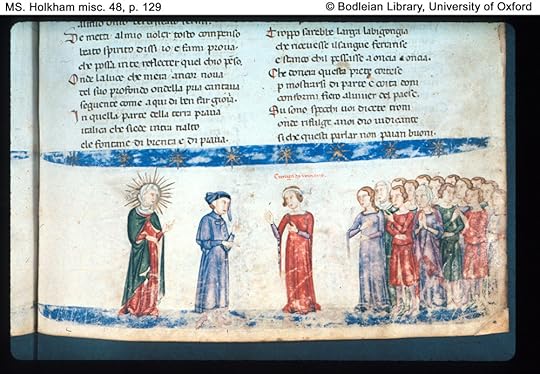
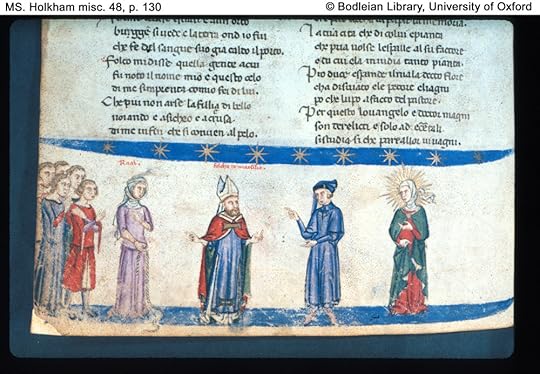
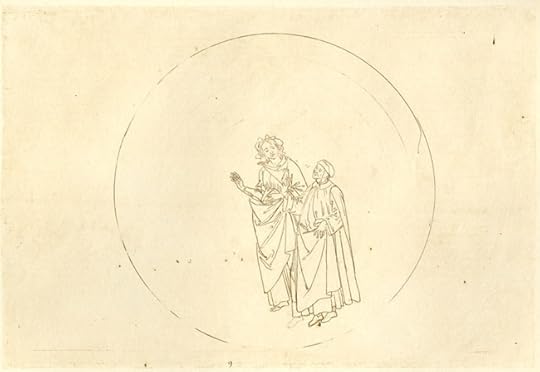
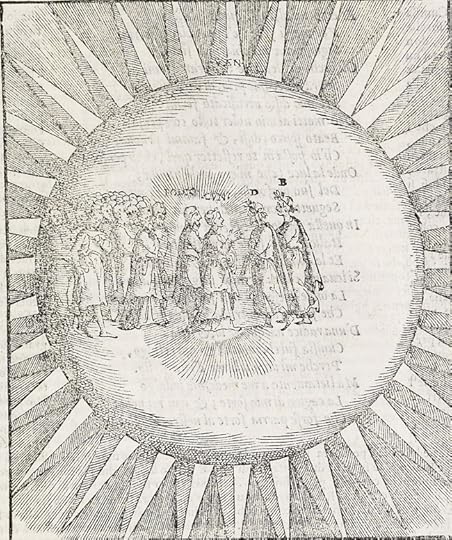
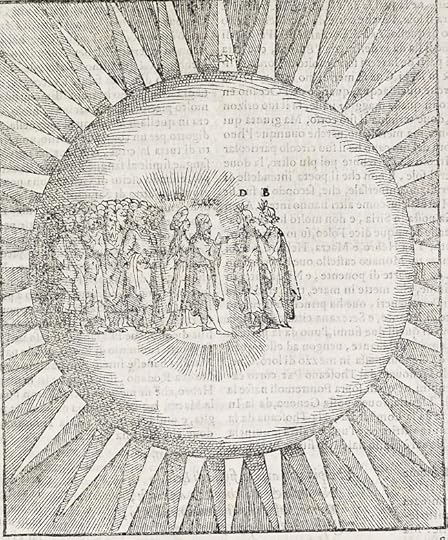
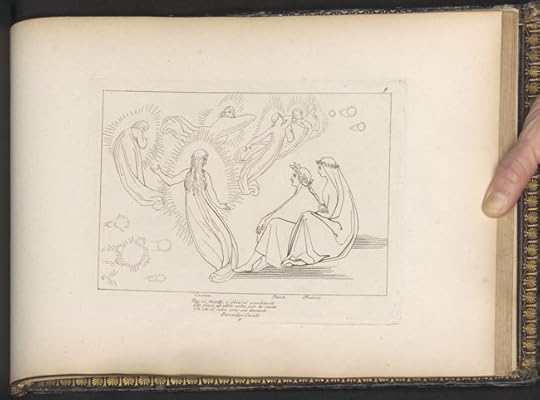
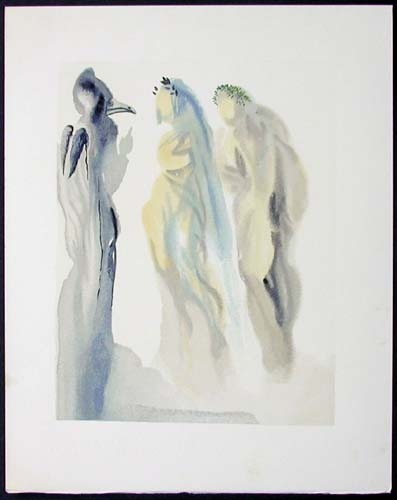
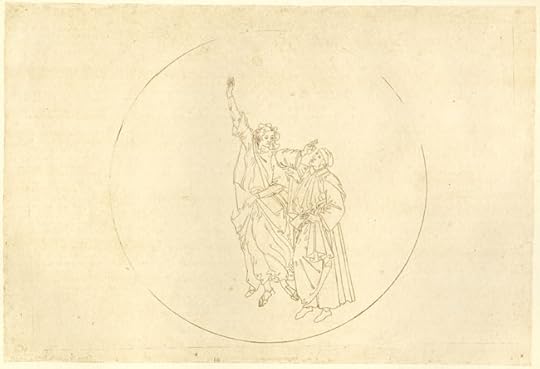
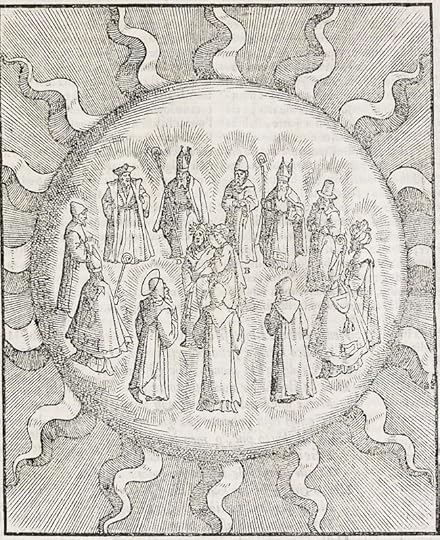
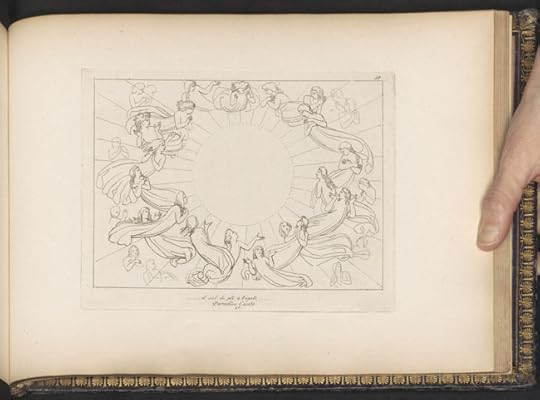
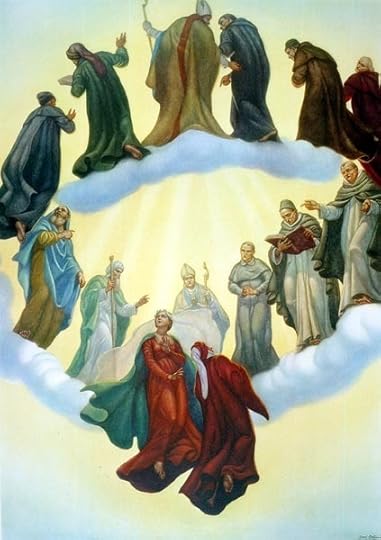
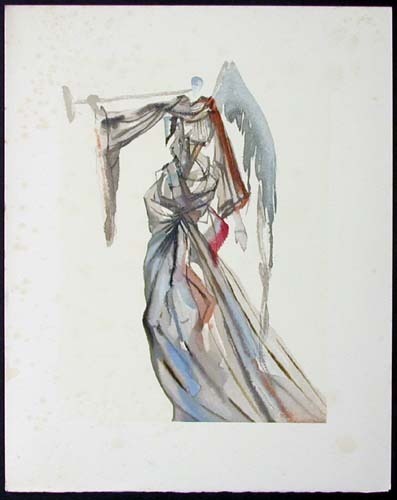
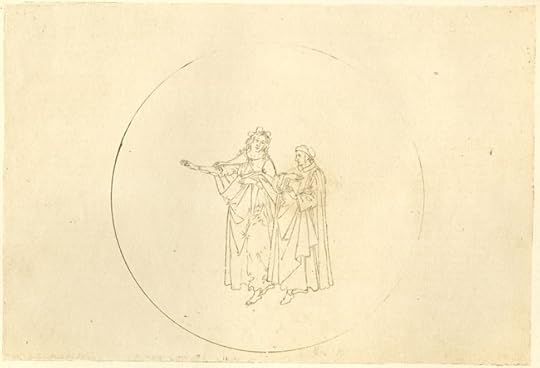
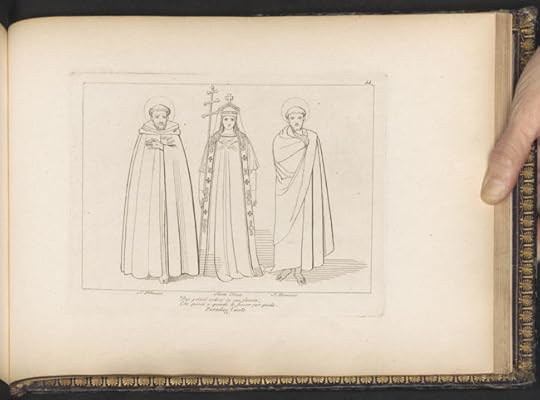
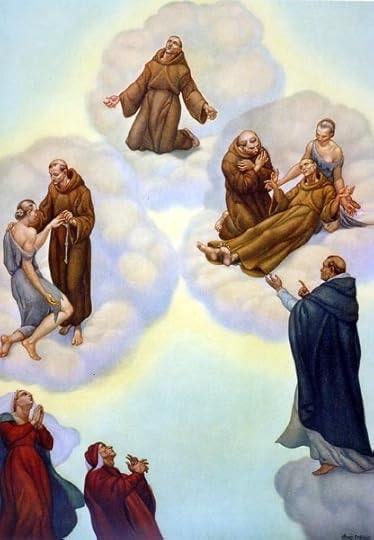

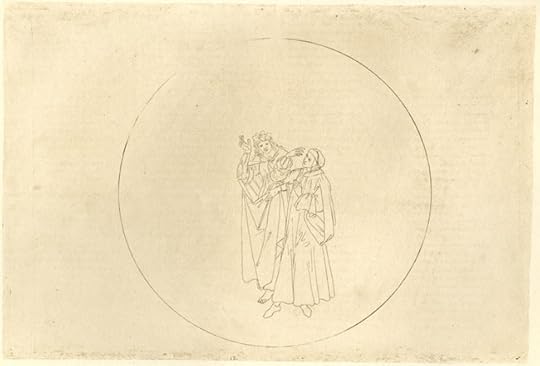
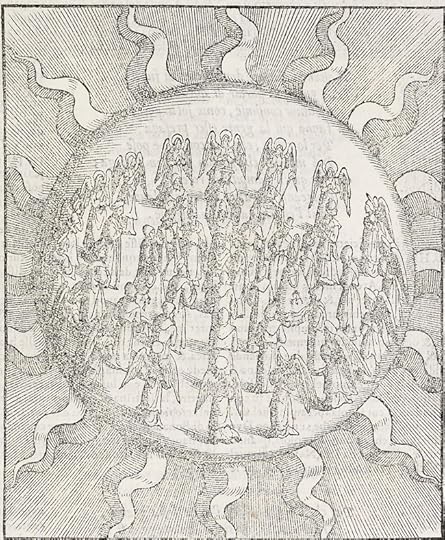
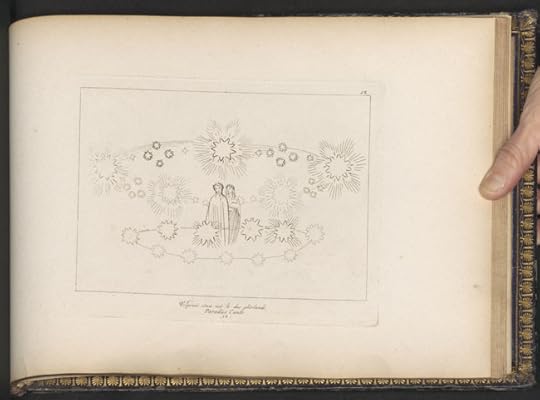
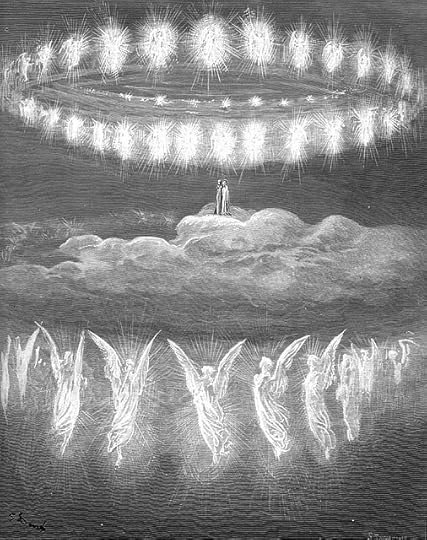
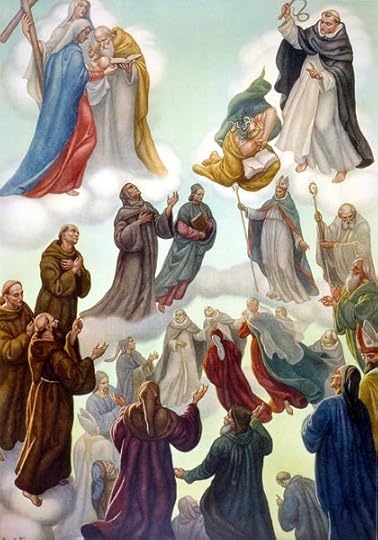
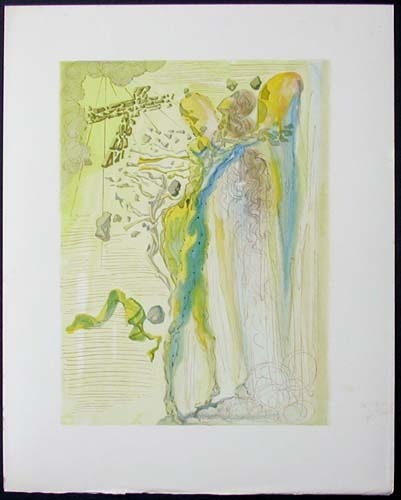
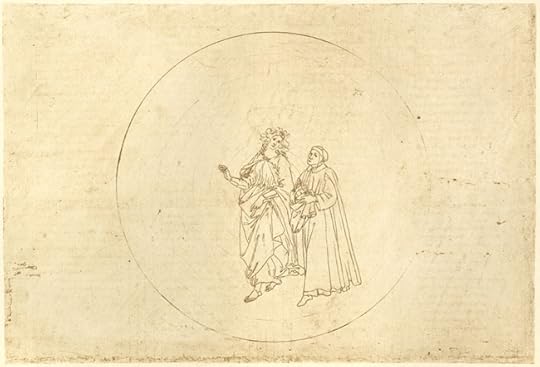
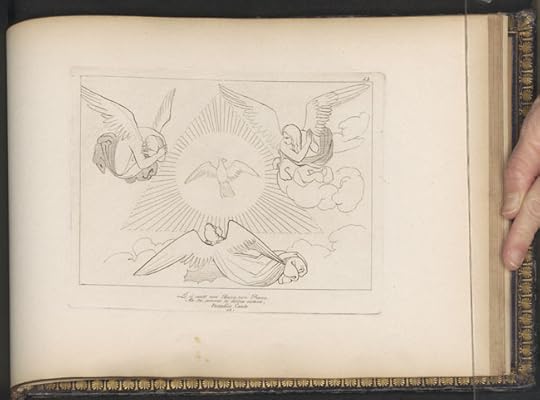
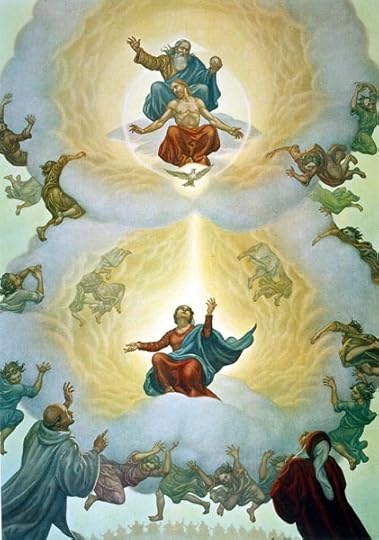
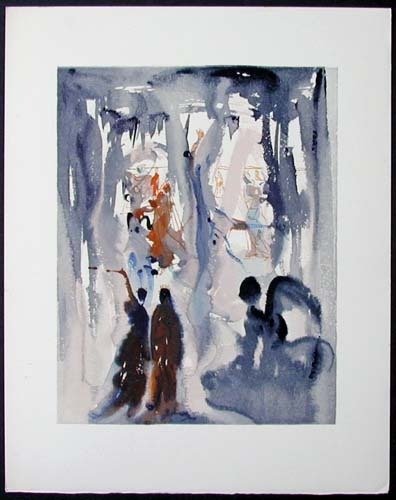
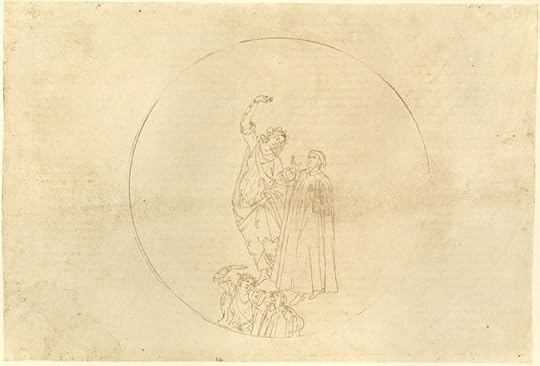
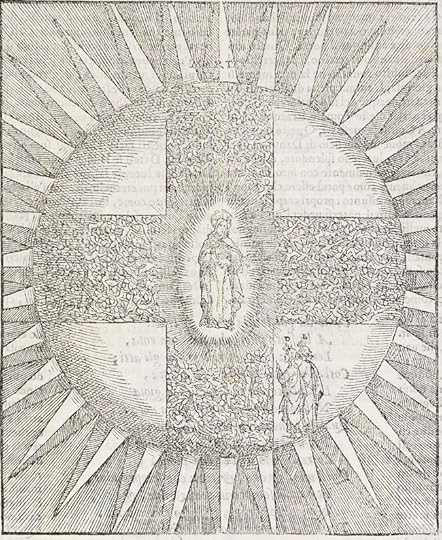
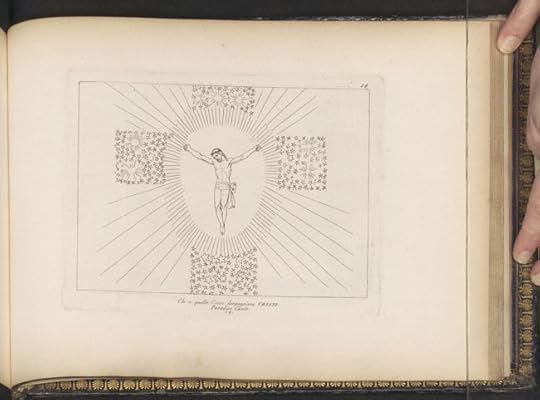
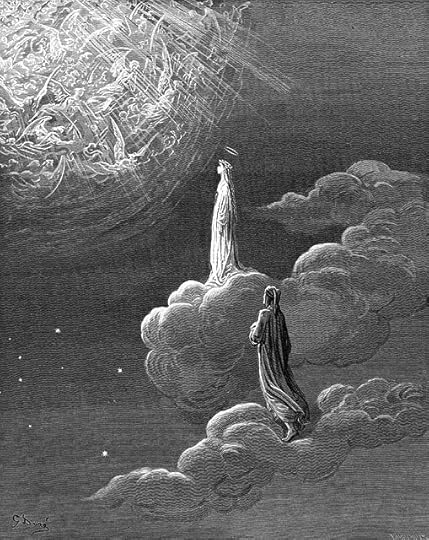
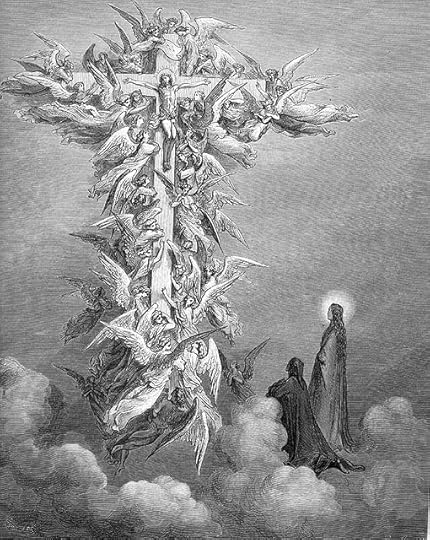
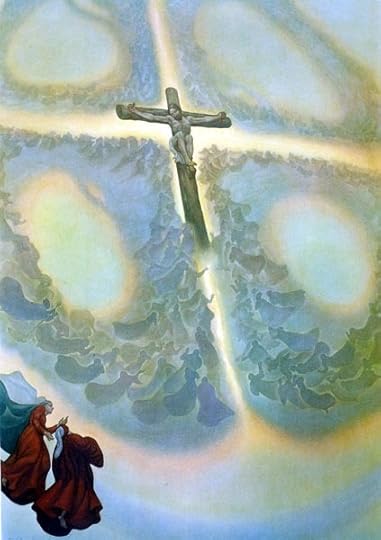
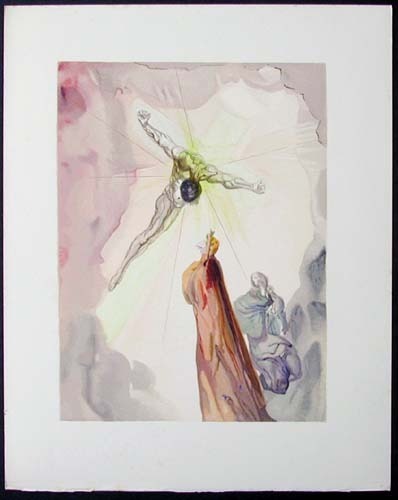


http://www.bl.uk/catalogues/illuminat...
Charles Martel on the vicissitudes of heredity: Dante and Beatrice hovering before Charles Martel, who stands within the Heaven of Venus, while below, Aeneas is standing before a Sicilian city, as three warriors approach
More (view spoiler)[
http://www.bodley.ox.ac.uk/dept/scwms...
Venus with Taurus and Libra; Dante and Beatrice conversing.
http://www.bodley.ox.ac.uk/dept/scwms...
Charles Martel with a group of souls.
http://www.bodley.ox.ac.uk/dept/scwms...
Dante talks to Charles Martel, who is followed by a group of souls; Beatrice.
http://www.worldofdante.org/media/ima...
Third planetary sphere (heaven of Venus); The realm of lovers--The soul of Charles Martel laments the history of his family and explains to Dante the reasons for the differences between human beings
http://www.worldofdante.org/media/ima...
Heaven of Venus; meeting with Charles Martel
http://www.worldofdante.org/media/ima...
Carlo Martello approaches Dante in Heaven of Venus
http://www.worldofdante.org/media/ima...
Charles Martel addresses Dante and Beatrice
http://www.lockportstreetgallery.com/...
The Ascent to Venus
(hide spoiler)]